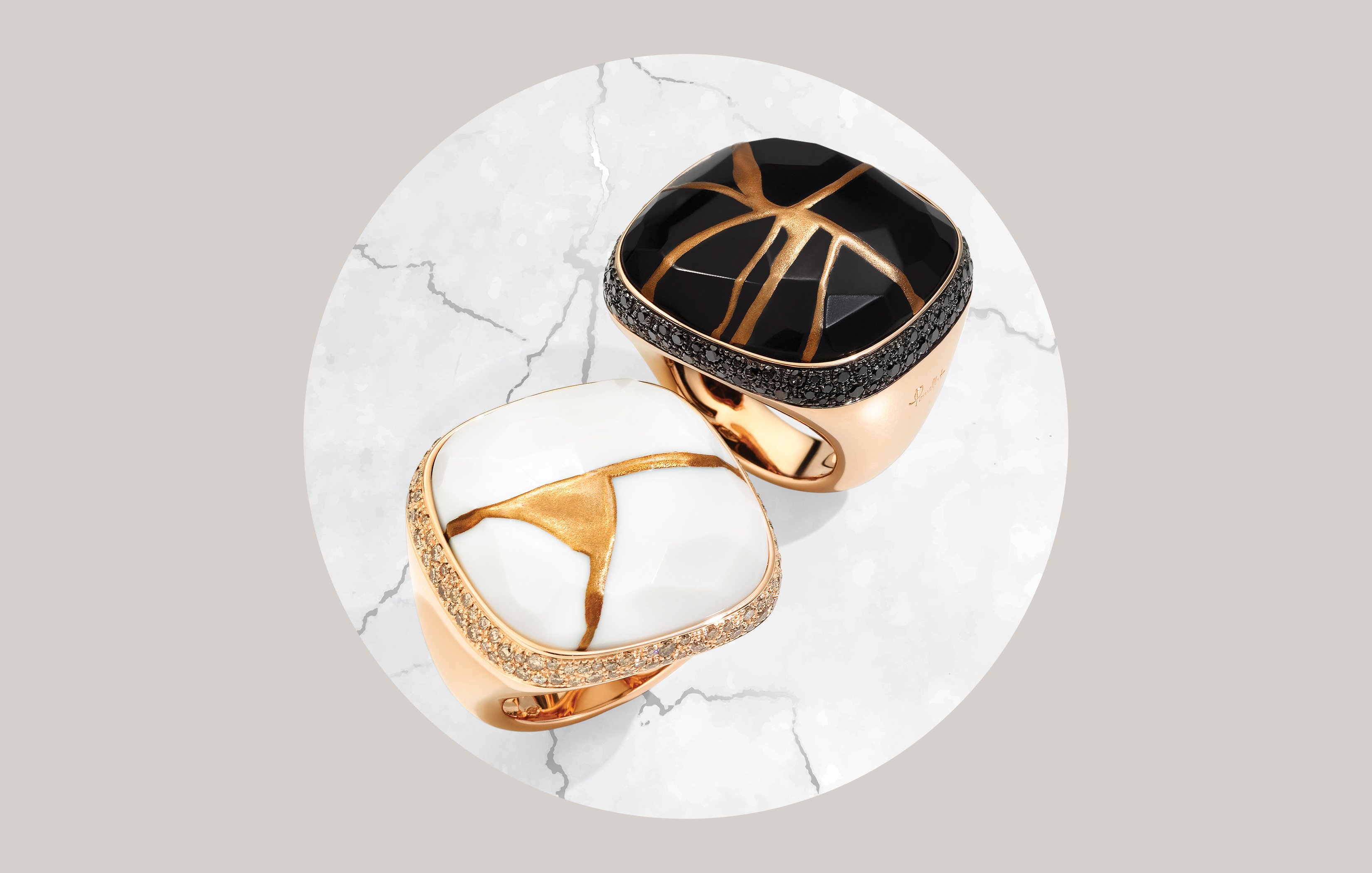The ancient Japanese technique has been used to mend broken pottery for centuries. Now, at a time where sustainability is more important than perfection, it’s found a place in the jewellery industry.
I’ve lost the ability to throw anything away. It’s not because I’m a hoarder. It’s because I can no longer toss out broken bowls and unravelling sweaters with the prelapsarian abandon of yore. So, down into the basement they go until I figure out how to repair them.
RELATED: 8 Things To Know Before Buying a Watch
While in this salvaging frame of mind, I noticed a rivulet of gold on an old brown espresso cup after dinner at a friend’s place. The cup looked like it had had a mini volcanic eruption. Gleaming 24-karat “magma” slithered down from the rim in a meandering diagonal. My friend, a ceramic artist, said: “It’s bootleg kintsugi. The cup was cracked so I just mixed some gold powder with epoxy and glued it back together.” Had any masters of the 15th-century Japanese art form been at the table, they would have spit out their tea. But to the rest of us, who didn’t know any better, gold glue made for a nifty repair job.
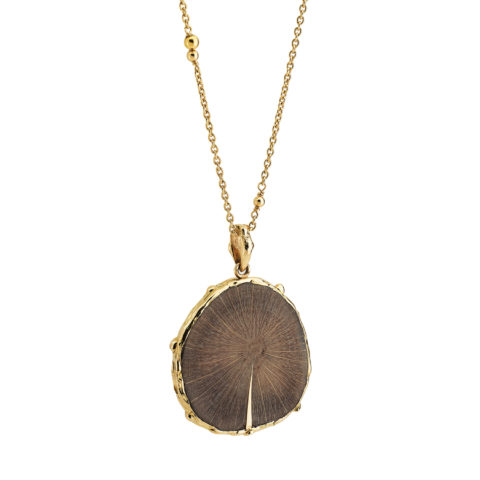
“Kintsugi” means “to join with gold.” As the legend goes, a shogun named Ashikaga Yoshimasa’s favourite celadon-glazed bowl was broken so he sent it to China to be repaired. What returned was a Frankenstein-style mend job held together with metal staples. Yoshimasa ordered his own people to come up with a better patching technique.
Thus was born kintsugi — a slow-as-molasses fix that uses gold-dusted urushi lacquer to glue broken pieces of pottery together. The lacquer is made from the sap of the Toxicodendron vernicifluum tree, a member of the sumac family, which grows in Japan, China and Korea. Urushi trees are finicky and can only be harvested when they are between 10 and 12 years old. Each tree produces roughly a single cup of pale urushi sap, and once that sap has been extracted, the tree is cut down. So, urushi is like the blood of trees. Obtaining it requires a botanical sacrifice, true, but one that is not irrevocable. Nature kicks in, the slain tree regenerates shoots from its stump and the slow cycle begins all over again the following spring.
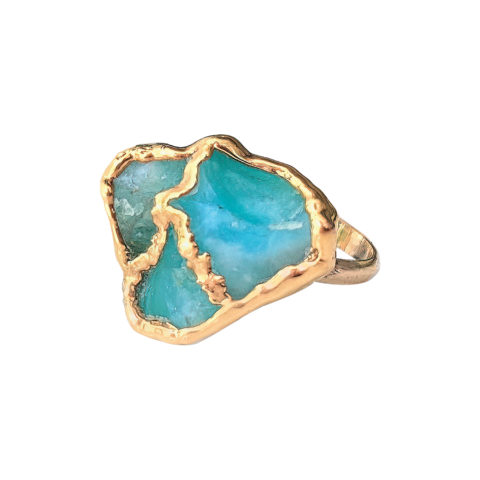
Immense work goes into tapping urushi trees and processing the sap, which is done by hand. The sap will have different qualities depending on which season it’s collected in: Spring sap contains more water, while summer sap has a higher concentration of urushiol, the chemical compound that gives urushi lacquer its indestructible hard glossiness. The sap is poured into wooden vats and placed under a heat source or outside on hot days. Workers stir it continuously by hand.
Kintsugi has traditionally been used to mend pottery, but jewellers have borrowed the technique to dramatically upcycle flawed and fractured gems. The well-trained lacquer master carefully cleans each fragment of stone. Deftly, they coat the surfaces of the fissure, join the pieces together and leave the glued-together gem to set, which requires a high humidity of up to 80 per cent and a temperature of 24°C. It takes the lacquer several weeks to form a matrix of molecules over the surface, bonding the gem pieces together for what will now be thousands of years. The urushi glue is then sanded down, and gold is dusted over the lacquered cracks.
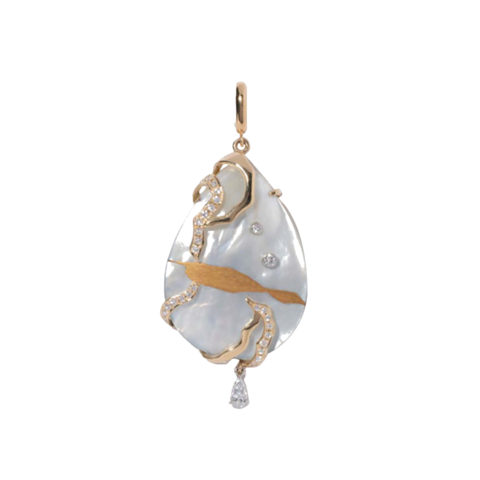
Besides the immeasurable value of time and skill poured into patiently reconstructing a broken object, it is the materials — the gold, of course, but also the lacquer — that make the repair as precious, if not more so, as the thing being repaired. Perhaps this is what Japanese jeweller Milamore is hinting at in its kintsugi-inspired (but not kintsugi-repaired) floating pavé diamond gold rings and necklaces.
Italian jewellery house Pomellato has introduced a kintsugi collection consisting of reclaimed broken gemstones. Tokyo artist Maya Higuchi is collaborating with Pomellato to create rings, pendant necklaces and earrings from damaged jet and volcanic opals called kogolong. Her gold-slashed repair work gives the pieces their contemporary abstract chocolate-box aesthetic. The kintsugi also makes each piece absolutely one of a kind.
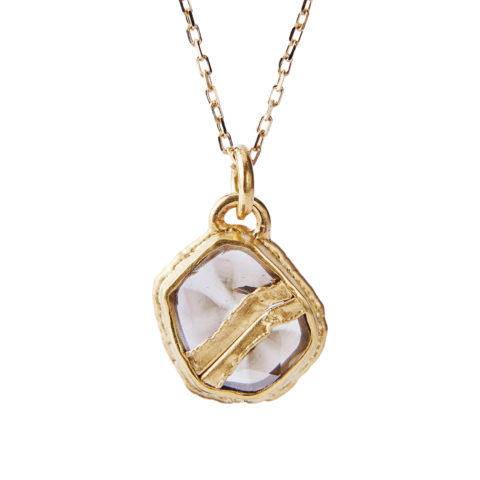
Many fine-jewellery clients who buy “nothing but the best” won’t understand plunking down a few thousand dollars for a glued-together ring. But kintsugi philosophy is seeping into a West that is trying to be more sustainable and less blinkered about perfection. More than just a way to fix broken things, kintsugi is a philosophy about broken things — that we don’t discard them, that we fix them and that we fix them by elevating their brokenness, not concealing it. People are taking kintsugi to heart and baring the unique chips and cracks of their life experience to others. And in high jewellery, where poorly placed flaws reduce gemstones to a sliver of their worth, kintsugi is turning trash into shimmering treasures.
This article first appeared in FASHION’s April 2023 issue. Find out more here.
